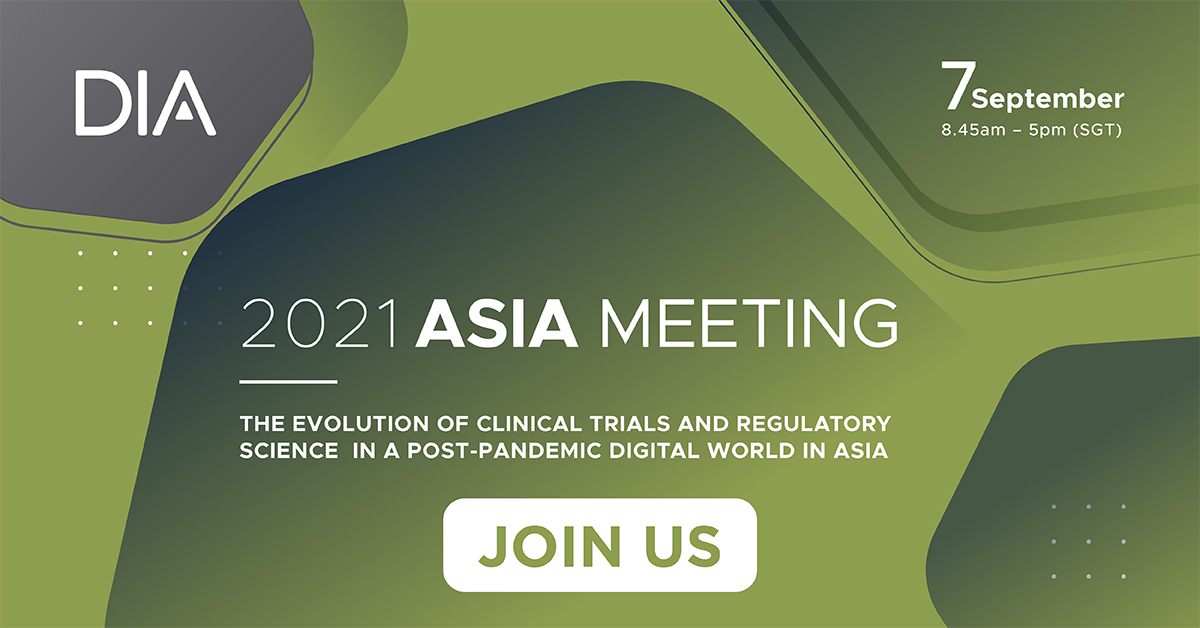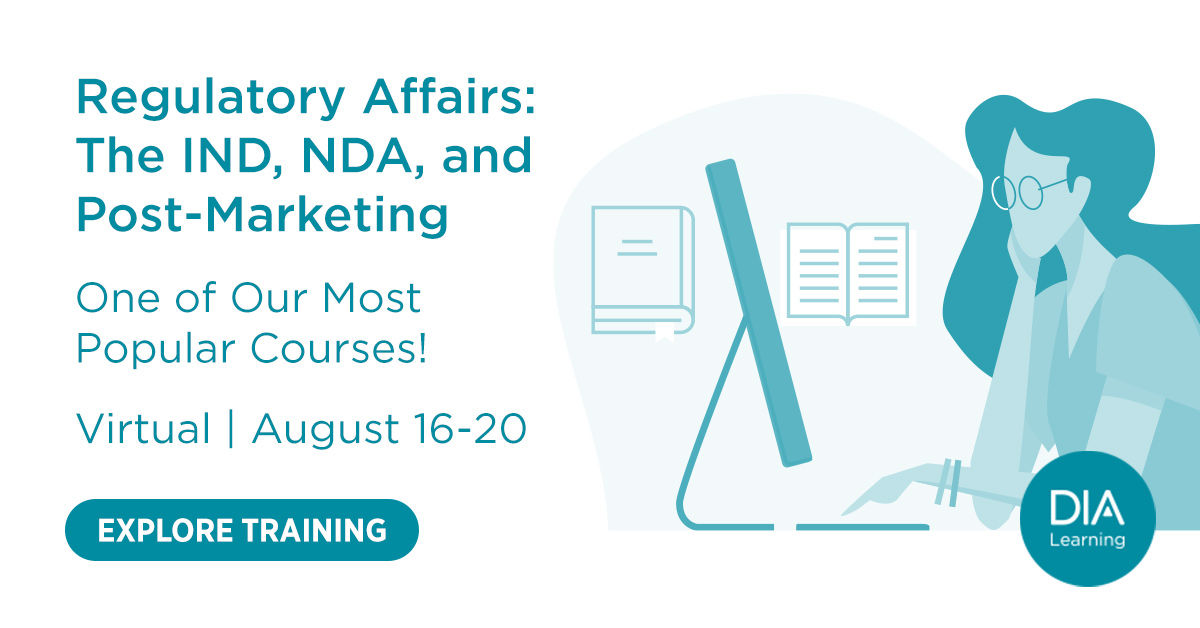Table of Contents
EXECUTIVE LEADERSHIP
Subscribe
Love Global Forum‘s new online format? Subscribe today and never miss an issue.
Editorial Board
Content stream editors
Gary Kelloff US National Institutes of Health
David Parkinson ESSA Pharma, Inc.
regulatory science
Isaac Rodriguez-Chavez ICON plc
Patient engagement
Trishna Bharadia Patient Advocate and Media Contributor
Mary Stober Murray National Minority Quality Forum
VALUE AND ACCESS
Monika Schneider Shionogi
Editorial Staff
Sandra Blumenrath, Managing Editor, Scientific Publications DIA Scientific Communications
Chris M. Slawecki, Senior Digital Copyeditor DIA Scientific Communications
Regional Editors
David Mukanga Bill and Melinda Gates Foundation
ASEAN
Jin Shun Sandoz
AUSTRALIA/NEW ZEALAND
Richard Day University of New South Wales, Medicine, St. Vincent’s Hospital
CANADA
Judith Glennie JL Glennie Consulting, Inc.
CHINA
Ling Su Shenyang Pharmaceutical University, Lilly Asia Ventures
Europe
Thomas Kühler Sanofi R&D
INDIA
J. Vijay Venkatraman Oviya MedSafe
JAPAN
Ozawa Goshi Real World Data Co. Ltd.
LATIN AMERICA
Cammilla Gomes Roche
USA
Ebony Dashiell-Aje BioMarin
Young Professionals Editors
Saloni Patel Acorda Therapeutics
DIA Membership
Bringing together stakeholders for the betterment of global health care.
University of California, San Francisco
University of Pennsylvania
University of Texas MD Anderson Cancer Center
University of California, San Francisco
University of Minnesota
University of California, San Francisco
University of California, San Francisco
University of California, San Francisco
ince opening in 2010, 22 agents or combinations of agents have entered I-SPY 2–a long-standing, adaptive platform trial of neoadjuvant therapy for patients with stage 2-3 breast cancer with high risk for early recurrence. Twelve agents have completed accrual and seven have “graduated” in at least one tumor subtype (indicating an 85% probability that the agent will be successful in a confirmatory phase 3 trial).
Key Advancements of the I-SPY 2 Platform Trial:
- pCR is an important prognostic marker for individual patients with molecularly high risk disease, regardless of treatment or subtype received.
- We developed an MRI-based “predicted Residual Cancer Burden” (pre-RCB) strategy to predict pCR after each regimen, but before surgery, with high specificity and moderate sensitivity and are testing it prospectively. Furthermore, ctDNA is being developed as an adjunct to improve residual disease prediction and outcome.
- Improved classification of tumors improves predicted pCR rates with optimal agent assignment for the molecularly high risk population.
Howard University
he US Food and Drug Administration’s (FDA) 2020 Drug Trials Snapshots Summary Report found that clinical trials supporting the 53 new molecular entities approved by FDA’s Center for Drug Evaluation and Research (CDER) in 2020 included, on average, only 11% Hispanics and 8% African Americans. This lack of diversity in clinical trials can have a direct impact on health outcomes. Events of the past year and the Covid-19 pandemic have brought a renewed sense of urgency to ensure that underserved and understudied patient populations are not left behind in our age of personalized healthcare.
Re-Evaluating Eligibility Criteria
![]() White Paper Podcast
White Paper Podcast
Multi-Stakeholder Effort Required – One Size Does Not Fit All
Evidation Health
Elektra Labs
Digital Medicine Society
echnological advances are speeding the development of digital measures and endpoints throughout drug development and across therapeutic areas and patient populations. While regulators encourage stakeholders to pursue patient-centric approaches, few actionable guidances or standards exist.
![]() White Paper Podcast
White Paper Podcast
Meeting Highlights: DIA China 2021
Meeting Highlights from DIA China 2021
Meeting Highlights: DIA China 2021
Taimei Medical Technology
n May 2021, the National Medical Products Administration (NMPA) in China issued an announcement about Good Pharmacovigilance Practice (NMPA/Decree No.65/2021), hereafter referred to as GVP, the first pharmacovigilance guideline issued in accordance with China’s new Drug Administration Law of the People’s Republic of China. The expected official version of GVP has been released in final form and will be effective on 1 December 2021.
![]() White Paper Podcast
White Paper Podcast
Meeting Highlights: DIA China 2021
Pfizer
he key priorities to modernize regulatory science are to optimize the regulatory system, encourage scientific innovation, and develop cross-cutting talents. By opening interdisciplinary conversations and studying the similarities and differences among regional regulatory policies, health authorities and scientists will be able to protect and promote the health of all populations.
Meeting Highlights: DIA China 2021
Takeda Development Center Asia
ew treatment areas including gene therapy, cell therapy, oncolytic virus, and proteolysis targeting chimera (PROTAC) products are growing into hotspots for early drug development in China. The recently issued Center for Drug Evaluation (CDE) Technical Guideline for the clinical trials of the oncolytic virus products emphasized methods of risk control in exploratory clinical trials for these products.
![]() White Paper Podcast
White Paper Podcast
Around the Globe
Marken APAC
Marken
he face of clinical trials has been changing rapidly, and while decentralized clinical trials have been explored by the industry for many years, the COVID-19 pandemic has exponentially accelerated the shift towards such trials with increased urgency. The most dramatic shift in this direction has been on logistical and at-home services, as they were needed to support the ongoing studies.
Around the Globe
Pfizer R&D Japan
atient engagement in clinical trials in Japan has been progressing steadily in the last few years. Pharmaceutical companies and patients who have not realized its value until recently have had more opportunities to hold discussions on clinical trials, with DIA contributing to and promoting such discussions. Currently, many pharmaceutical companies are trying to incorporate patient insight into their protocols and informed consent forms (ICFs). On the other hand, there remain a number of challenges to overcome in promoting these activities.
- Environmental changes brought about by the COVID-19 pandemic have served as an opportunity for pharmaceutical companies and patients to communicate with each other.
- A considerable number of pharmaceutical companies that have implemented patient engagement activities have examined ways of inviting the most appropriate patients to obtain input.
- Obtaining patient insight is key in implementing decentralized clinical trials (DCTs) as a near-term solution to the COVID-19 pandemic and as a longer-term solution to make it easier for patients to participate in clinical trials. On the other hand, the process of utilizing patient insight from individual countries in global trials has not been optimized.
- Medical institutions involved in clinical trials in Japan often use their own informed consent form (ICF) template. In this regard, it is necessary to explore ideas on how to implement patient-friendly ICFs at all clinical study sites.
- To overcome these obstacles, cooperation of not only pharmaceutical companies and patient groups but also government and academia/medical institutions is indispensable.
![]() White Paper Podcast
White Paper Podcast
Around the Globe

rof. Hisham Bin Saad Al-Jadhey, CEO of the Saudi Food and Drug Authority (SFDA), outlines the SFDA’s key priorities under its current strategic plan. He also touches on why domestic pharma and medtech manufacturing is important to the SFDA, pricing issues for innovative new therapies, and the role of the Authority within the Saudi “Vision 2030” plan.
![]() White Paper Podcast
White Paper Podcast
he impact of the COVID-19 pandemic was palpable throughout the drug development pipeline. Many of the policies, practices, and principles that emerged during 2020 will continue to shape clinical research and drug development practices for years to come. In addition to operational hurdles, COVID-19 also brought us new ethical challenges that will continue to resonate throughout the drug development community.
![]() White Paper Podcast
White Paper Podcast
Enhance personal growth and career development
Merck & Co., Inc.
uring the pandemic, many people recognized the need to significantly accelerate innovation to help ensure the future of our collective work, health, and advancements in medicine. Similarly, through developing a growth mindset and maximizing technology advancements, one can also evolve and enhance their personal growth.
New Fellows of DIA

Rebecca Vermeulen (Chair), Hoffmann-La Roche Ltd.



![]() White Paper Podcast
White Paper Podcast




















